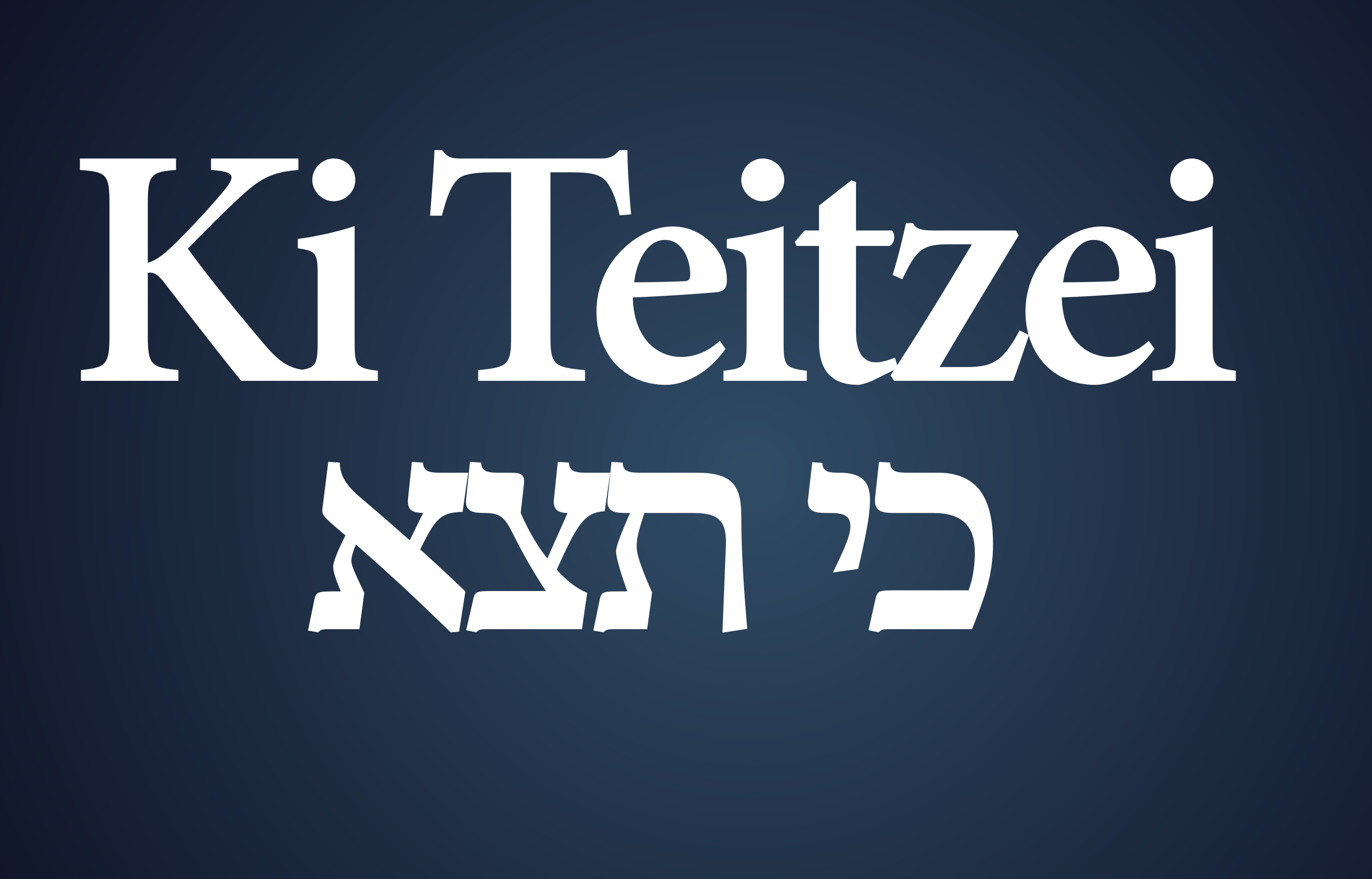
One verse, five voices. Edited by Salvador Litvak, Accidental Talmudist
You shall not wear a mixture of wool and linen together. –Deuteronomy 22:11
Rabbi Lori Shapiro
Open Temple
Rav Kook, the first chief rabbi of Palestine for the Ashkenazi community, wove Judaism into modernity through an understanding of his duty to unite a fractured peoplehood. His words contextualized Judaism for an emerging modernist nation post-World War I, post-persecutions and pogroms:
“The legal iniquity in the ownership of property is registered in the prohibition of wearing a mixed garment. … We are inhibited from the free mixing of wool, which was taken by robbery from the innocent sheep, with flax, which was acquired by equitable, pleasant and cultured labor.”
Rav Kook’s commentary on a biblical hok — a legal status of indiscernible rationale — fuels the imaginary and mystical power of hukkim. These laws might be comparable to Zen koans, fleeting expressions of mystery so inaccessible as to cast doubt upon us; thus, thrusting us forward in our search for meaning. At a time of faithlessness and confusion, Rav Kook’s commentary preserves an inviolable religious practice rooted in a humanistic call.
As we ready ourselves for the High Holy Days Torah readings on sacrificial worship — of the goat, the bull, the ram, the son and the wife — how might our consciousness expand when we consider these offerings? And how do they weave into the very fabric of our lives? Are we living our lives with a practice of discernment? Or, are we materially mixing in ways that break instead of mend? As we rise to the call of 5780, may we make our lives as exacting as shatnez.
Justin Levi
President, The Community Shul
There are many laws in Judaism that don’t make rational sense, at least on the surface. Not mixing wool and linen? You’ve got to be kidding me. Why in the world would God make such a seemingly random and pointless rule? If I can’t possibly understand the rule, why should I follow it?
Such is the attitude of so many people in our society today. We often hear the phrase “my truth,” as though the truth is malleable. If it doesn’t make sense to me, then it doesn’t make sense. This is narcissism, pure and simple.
Ultimately, the best reason to believe in God isn’t the most obvious. The knowledge that someone else controls the universe means that I don’t control it. I don’t know everything. I need to listen to other perspectives and to other people. As Father Cavanaugh stated so concisely in the movie “Rudy,” “There is a God, and I’m not Him.”
At some point, we need to realize that the world doesn’t revolve around any of us as individuals. We are united by a loving Creator and the world He gave us. In order to come to this realization, sometimes we need to do things we don’t want to do, and even some things we can’t understand. If we do, we can suppress our egos just enough that we can live together peacefully. Following the guidance of a loving, all-powerful, all-knowing Creator, and doing so in a linen-free suit seems like a good start.
Ilana Wilner
Judaic Studies, Shalhevet High School
There are two places in Tanakh where the phrase “wool and linen” are used together, once to tell us the prohibition of wearing garments mixed with these materials, the other in describing the Eshet Chayil, the woman of Valor.
Every Friday night we sing, “She seeks out wool and linen, and her hands work willingly,” she is praised for working with these two materials we are prohibited from combining. How could combining these materials be prohibited and praised? The technical answer given is that she is making tzitzit, the only garment that is permitted to be made of both wool and linen.
I believe there is a deeper value that helps reconcile the two accounts. We learn from the verse that she does not simply combine the two materials but rather actively seeks them out and eagerly works through the discomfort to create something that blends. From the prohibition we learn on the one hand the importance of holding our values and opinions. We don’t always need to rush to a compromise or conflate ideas. Yet at the same time, from the Eshet Chayil, we learn that machloket, disagreement, and active dialogue between conflicting ideas is to be praised where we willingly work through the discomfort.
As a Modern Orthodox Jew living daily with the balance of rules and exceptions, of ideas seemingly in tension, I am inspired by the Eshet Chayil, who actively seeks to live in the machloket, grapples with the uncomfortable and, through honest inquiry, pursues complexity, deep understanding and growth.
Rabbi Pinchas Winston
Thirtysix.org
Shatnez is the biblical prohibition against wearing wool and linen together in the same garment, the wool being from sheep or lambs, and the linen coming from the flax plant. Although shatnez is considered to be a Torah statute, a Torah law that defies human logic, the rabbis connect it to the story of Cain and Abel.
Cain was a flax farmer and Abel was a shepherd. When Cain killed Abel out of jealousy, it resulted in the “prohibition” of combining flax and wool. (This was even though the actual commandment not to wear such a combination didn’t come for thousands of years, and applies only to Jewish people.) One might have thought that “fixing” the sin would mean wearing the combination, not avoiding it. But when Cain took the life of his brother, he spiritually changed the world, effectively closing the door to such profound unity between “brothers.”
Our long history of killing and wars has shown this to be true. Therefore, we have to first open the door to such intense human unity before we can enjoy it, at which time it will be permissible again to wear flax and wool together. In recent times, the League of Nations was kind of an attempt at this, and the U.N., another. However, instead of fostering unity, they have often caused the opposite, and will continue to do so as long as our Cain-like tendencies override our Abel-like traits. Torah can help with that.
Rabbi Elliot Dorff
American Jewish University
Modern biblical scholars point out that when the priests officiated, they did wear garments made of a mixture of linen and wool (Exodus 28:6, 15; 39:2, 5). Such garments therefore enjoyed a degree of holiness comparable to that of the sacred dedicating oil and incense (Exodus 30:22-29), all of which were reserved for the priests and prohibited to laypeople, in order to distinguish priests from laypeople.
Maimonides (Guide 3:37) also thinks that the purpose of this prohibition was to distinguish one group of people from another, but he thinks it was to distance Jews from the practices of idolatrous priests, who put together vegetable and animal substances in their clothing for worship.
This prohibition, then, is one of many in which the Torah creates distinctions. Some are deeply meaningful. Shabbat, for example, is markedly different from weekdays, thus giving significance to both rest and work. Some distinctions among people are also warranted and helpful, as the division between those who are qualified and licensed to practice medicine and those who are not.
The Torah, though, ascribes different roles and privileges to priests, Levites and Israelites based solely on lineage. The rabbinic tradition was much more democratic, so that people as humble as the shepherds Hillel and Akiba could become rabbis. In our own day, then, we need to ask where and why distinctions among people are warranted and where and why they are not, and then our own actions and our public policies should reflect that careful evaluation.






















 More news and opinions than at a Shabbat dinner, right in your inbox.
More news and opinions than at a Shabbat dinner, right in your inbox.